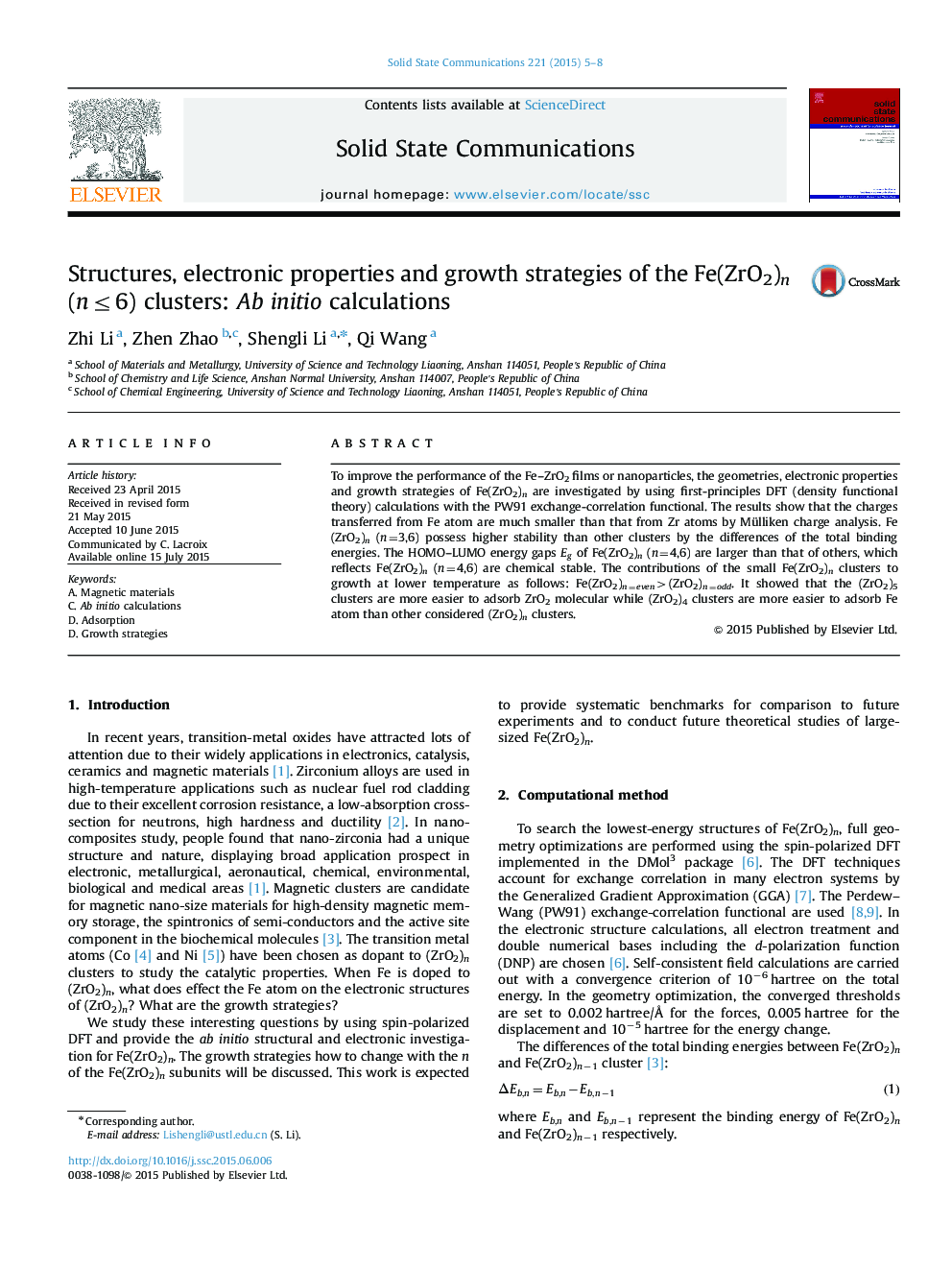| Article ID | Journal | Published Year | Pages | File Type |
|---|---|---|---|---|
| 1591361 | Solid State Communications | 2015 | 4 Pages |
•Fe(ZrO2)n (n=3,6) possess higher stability than other considered Fe(ZrO2)n (n = 1-6) clusters.•The chemical reactivity of the Fe(ZrO2)4 and Fe(ZrO2)6 clusters is better.•The contributions of the small Fe(ZrO2)n clusters to growth at lower temperature is Fe(ZrO2)n=even >(ZrO2)n=odd.
To improve the performance of the Fe–ZrO2 films or nanoparticles, the geometries, electronic properties and growth strategies of Fe(ZrO2)n are investigated by using first-principles DFT (density functional theory) calculations with the PW91 exchange-correlation functional. The results show that the charges transferred from Fe atom are much smaller than that from Zr atoms by Mülliken charge analysis. Fe(ZrO2)n (n =3,6) possess higher stability than other clusters by the differences of the total binding energies. The HOMO–LUMO energy gaps EgEg of Fe(ZrO2)n (n=4,6) are larger than that of others, which reflects Fe(ZrO2)n (n=4,6) are chemical stable. The contributions of the small Fe(ZrO2)n clusters to growth at lower temperature as follows: Fe(ZrO2)n=even>(ZrO2)n=odd. It showed that the (ZrO2)5 clusters are more easier to adsorb ZrO2 molecular while (ZrO2)4 clusters are more easier to adsorb Fe atom than other considered (ZrO2)n clusters.
